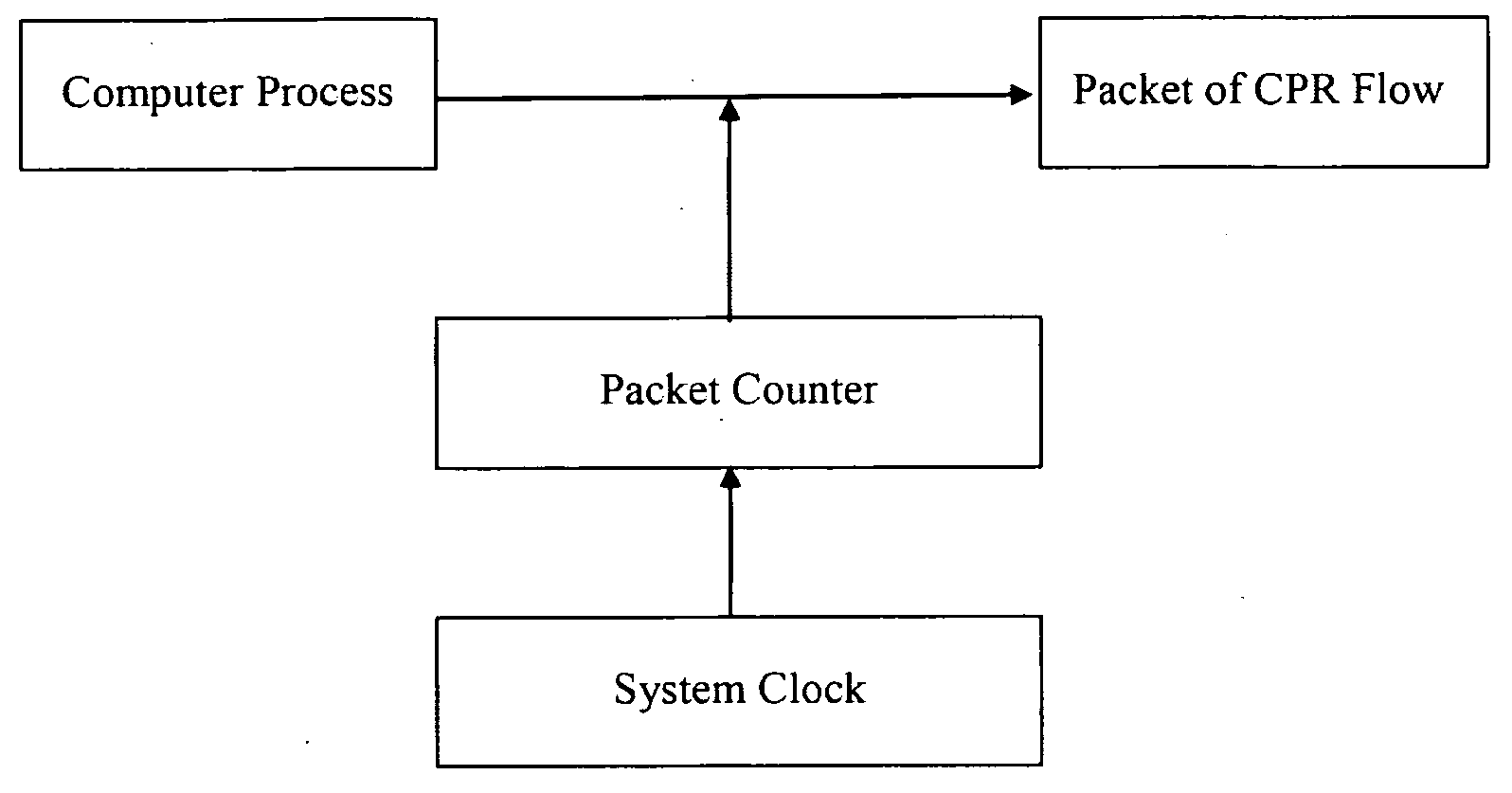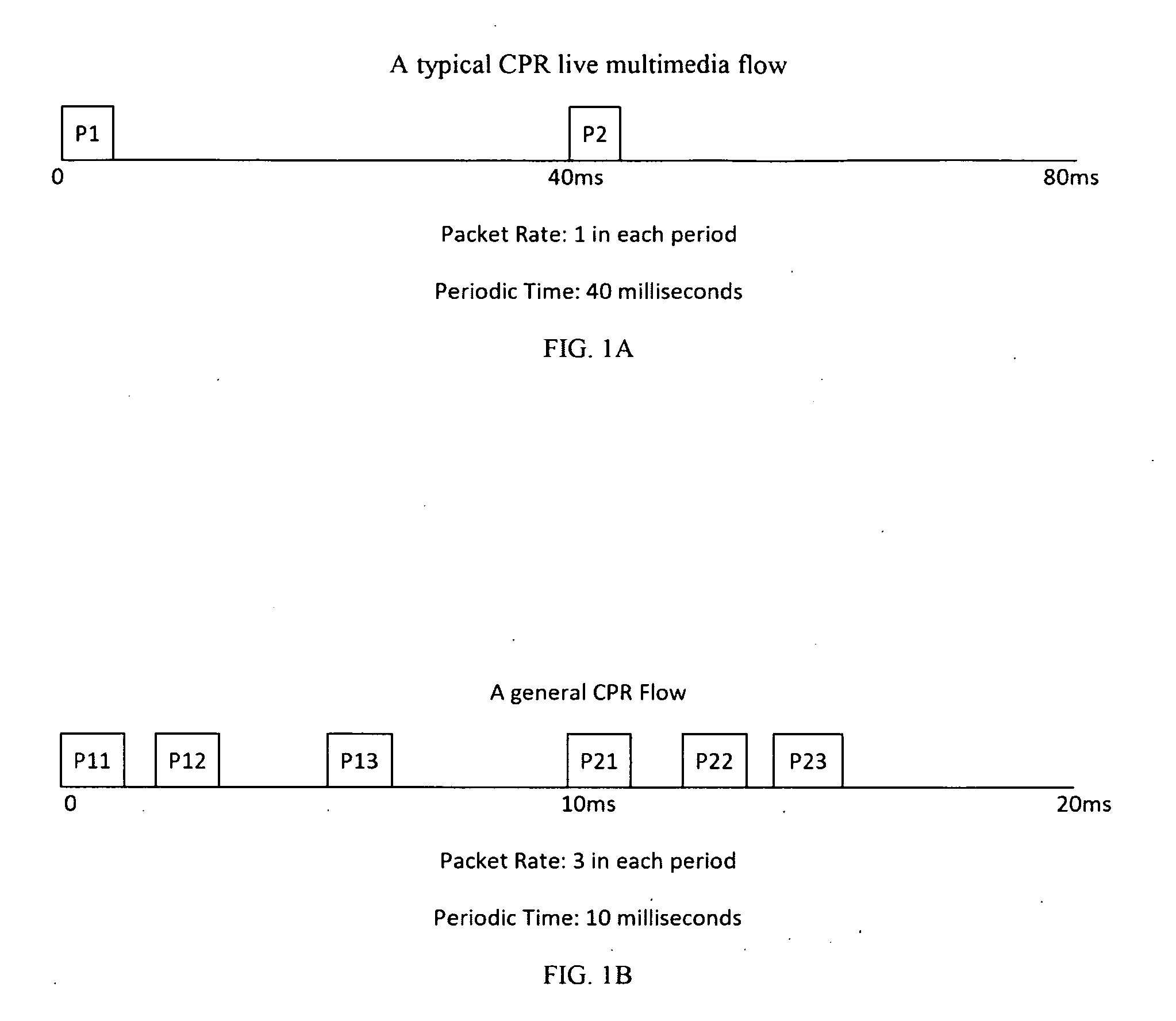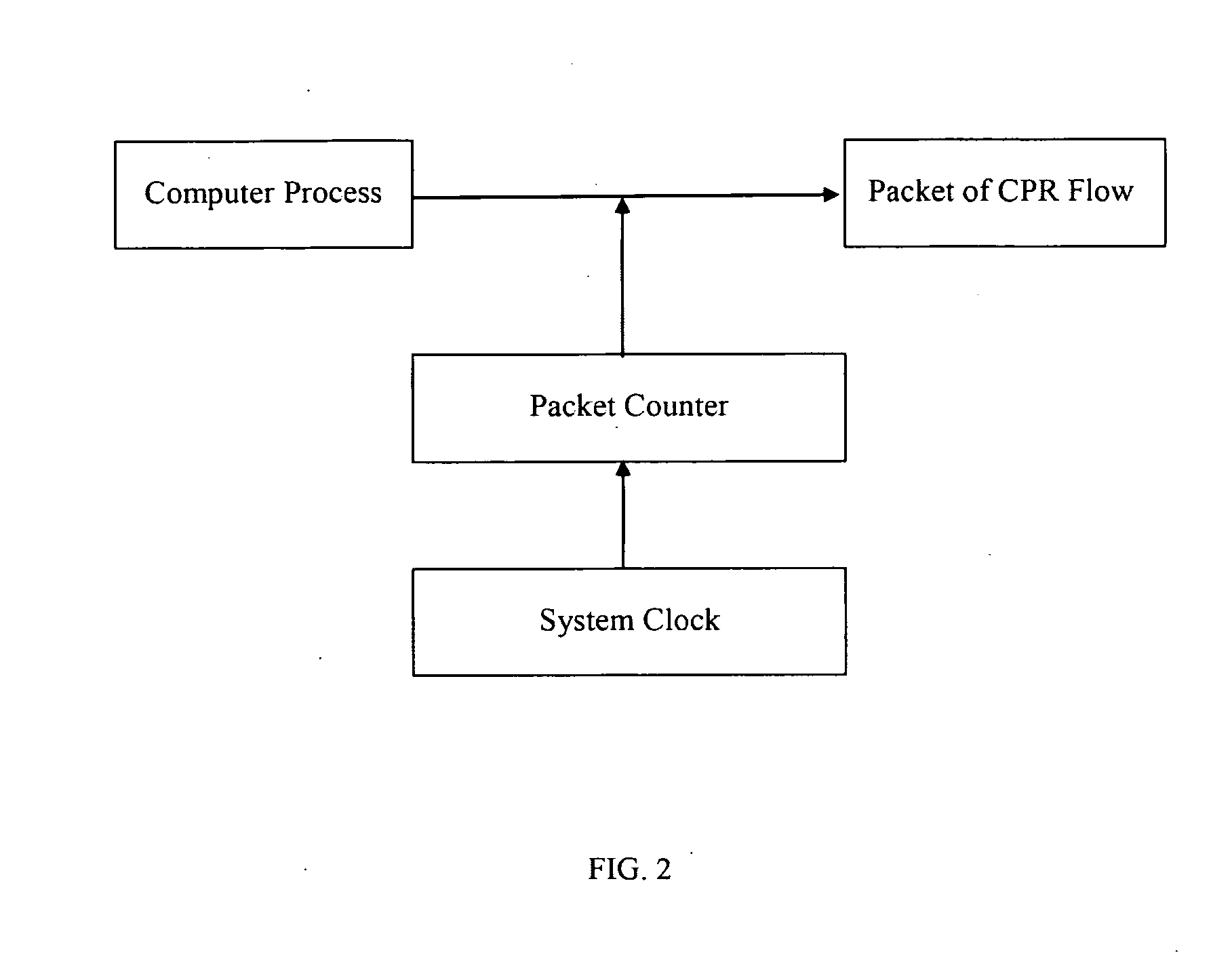Two Division Method for Quality of Service (QoS)
a quality of service and two-part technology, applied in the field of quality of service (qos) mechanisms, can solve the problems of inability to adapt to other applications, inability to meet the needs of live multimedia communication, and packet loss in packet-based networks, etc., and achieve the effect of not being able to scale well with the growth of the intern
- Summary
- Abstract
- Description
- Claims
- Application Information
AI Technical Summary
Benefits of technology
Problems solved by technology
Method used
Image
Examples
Embodiment Construction
[0028]FIG. 1A illustrates a typical live multimedia flow, such as voice and video, which is a CPR flow with a 40 millisecond period.
[0029]FIG. 1B illustrates a general CPR flow, which produces a single or a multinumber of packets in a periodic time. In this drawing, the periodic time is 10 milliseconds and packet rate is 3 in a periodic time. The time requirement of the packets is not critical while the tolerance is to produce a constant number of packets in a periodic time for a CPR flow.
[0030]FIG. 2 illustrates the concept of generating a CPR flow in a sender according the present invention. A counter controls the sending number of packets which are generated from a program process while a system clock resets the counter by a system periodic time.
[0031]FIG. 3 is a block diagram of a computing node according to the present invention. A selector classifies the incoming packet into CPR division or NRPR division and a FQ / WFQ scheduler takes charge to schedule the packets from the two ...
PUM
 Login to View More
Login to View More Abstract
Description
Claims
Application Information
 Login to View More
Login to View More - R&D
- Intellectual Property
- Life Sciences
- Materials
- Tech Scout
- Unparalleled Data Quality
- Higher Quality Content
- 60% Fewer Hallucinations
Browse by: Latest US Patents, China's latest patents, Technical Efficacy Thesaurus, Application Domain, Technology Topic, Popular Technical Reports.
© 2025 PatSnap. All rights reserved.Legal|Privacy policy|Modern Slavery Act Transparency Statement|Sitemap|About US| Contact US: help@patsnap.com



